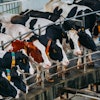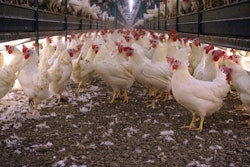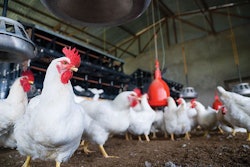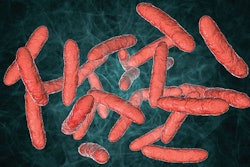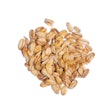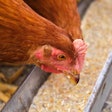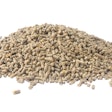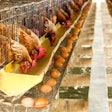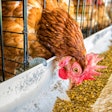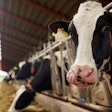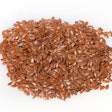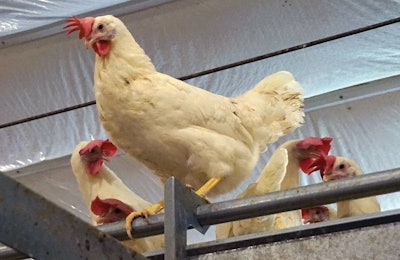
Cage free does not necessarily mean free-range layers. Hens are still kept in-house on floors with bedding material or in open aviaries (multi-storied cages with open access).
In general, cage free means, as was the political motivation behind it, that hens are free to roam, wherever they might be kept. This is in sharp contrast to caged layers where movement was from limited to restricted. Some claim, it was the abuse of the caged system that led institutional intervention to improve bird welfare by giving them more freedom to move. This extra freedom now given to layers allows them to move around and interact with each other and, of course, with their environment. Such new way of life leads to three new, distinct patterns or behaviors, each associated with problems or challenges that we sometimes can address through nutritional means.
These new issues are:
Increased movement. Free-roaming hens move around, spending energy and putting pressure on their bones, especially when they move/fly in a non-horizontal direction in multi-storied aviaries. However, all this extra exercise prevents older problems such as cage fatigue and/or weak bones syndrome.
Social interaction. Cage-free hens also tend to compete more for their daily ration, thus increasing further energy needs. They also compete more for social status within the flock, and in general lead a more active, if not interesting, life. While this is considered ideal from a social welfare position, such increased activity not only increases their energy expenditure, but it also creates situations where hens receive less nutrition if their status is not high enough to allow them sufficient space at the feed trough. Here, we need to remind ourselves that layers are not fed ad-libitum but on a restricted diet of about 100 grams feed per hen per day.
Contact with excreta. Cages offered a singular benefit in that they prevented direct contact with excreta. In systems where such contact can no longer be prevented, as is the case in deep litter systems, hens will often pick and consume excreta, for several reasons. This increases their exposure to coccidia that are endemic to the rearing of this species and cannot be controlled without strong medical treatment. Lamentably, such coccidiostatic drugs have now been included in the global antibiotic reduction effort, making gut health control a new problem for cage-free hens.
The above changes in the way we keep modern layers have not negated the basics of their nutrition. Instead, they have created a need to review and revise such nutrition in order to be able to offer a diet that partially alleviates some of these problems.
These seven points require particular attention:
1. Energy
It is estimated that freedom of movement in cage-free hens increases energy requirements from 5 to 15 percent, depending on facilities layout and density. There are two ways to increase energy intake. The first is to increase daily feed allowance by, say, 5 percent increments and watch bird body weight development and egg-laying performance. The second is to keep feed intake at established levels (important for genetic lines with limited appetite) and increase dietary energy concentration by adding a lipid source or reducing fiber concentration, or a combination of the two. Seasonal patterns are to be expected, and as such, it is advisable to monitor such exercise for multiple cycles until reliable records are collected. The same is true for when one changes from one hybrid to another, no matter how similar body weight and egg-laying performance might appear on the genetic supplier’s literature.
2. Protein
Extra activity is always associated with heavier musculature, and this requires protein for its buildup and maintenance. Although this requirement is expected to be minimal and spread over a long period of time, it cannot be insignificant in animals that are fed on a limited ration. The energy-to-protein (amino acids) ratio might require slight adjustment, but this aspect remains to be further quantified. A sudden drop in egg weight, however, or an inability to match bird age with expected egg weight is a good indication that more protein is required.
3. Wastage
Feed in battery cages was rarely wasted, but, this might not be always the case in cage-free systems, especially when housing density and feeder space allowance create competitive behavior patterns. It is also possible that feed may be wasted due to insufficient feeder design and/or operation, especially when a house is first converted to a cage-free system. Keeping a close eye on hens during feeding time will reveal how much feed is wasted and the reason such activity happens, leading hopefully to the resolution of a profit-robbing issue.
4. Egg weight variation
All this new physical activity, and its associated increased social interaction and competition, may lead to some hens receiving inadequate amounts of feed. This is evidenced at its slightest form by an increased variation in egg weight, to be followed by a significant drop in egg numbers – always as expected against bird weight and age. If this happens, and population density cannot be altered, then the only remedy is to increase feed allowance or nutrient density. Such a move will cause top-ranking birds to become overweight, with all associated problems, but at least it will temporarily resolve the laying of eggs of highly disparate weights.
5. Water over-consumption
Increased water intake in hens can be due to reduced access to feed or an increased need for water to excrete superfluous minerals in feed. This would not be a great issue in caged hens, but when layers are kept on deep bedding (straw or wood shavings), this increases litter moisture, with several associated problems. These range from increased leg problems to dirty eggs to increased colonies of coccidia. Extra activity associated with heat stress will certainly increase water needs, and it is reasonable to expect increased water-related issues during the hot season of the year. This is a difficult issue to resolve, but from a nutritional point of view, it is recommended to control ash (minerals), protein and fiber in diets. Fiber, in particular, should be controlled in terms of quantity but also quality as a different fiber profile can significantly alter water balance patterns.
6. Coccidia
Here, experiences from the broiler industry can be extremely useful. At the very least, certain additives may keep overall gut health and systemic immunity as high as possible. Nevertheless, there is no single product that can control coccidiosis as effectively as traditional coccidiostatic drugs, and this is a problem we need to address rapidly. In the meantime, a combination of preventive measures, of which nutrition is but a small part, should be employed to safeguard gut health.
7. Bones
Bone health has always been a problem with hens. Lack of movement/exercise and high egg productivity in traditional cage systems lead to weak bone structure. Hens cannot absorb enough calcium to sustain a strong bone structure and their genetically determined high productivity. In cage-free hens, strong bones are a prerequisite as the extra movement and flying around can be the cause of higher incidences of fractures, especially toward the end of their cycle. This will lead at its slightest form to reduced feed and water intake, as hens will have difficulty moving around to satisfy these needs. Thus, all measures already taken in traditional hen nutrition to ensure enough calcium, phosphorus and vitamin D are absorbed daily should be intensified in cage-free systems.
There is no doubt that many more issues will be revealed as the new cage-free systems become commonplace throughout the world. We might have resolved one issue, that of welfare, but we have created several new ones. It should be false to claim that nutrition alone can resolve all these issues, but at least it can help in alleviating some of them until a more sustainable resolution emerges. Until, then, it is business as usual, with the well-known method of trial and error.
